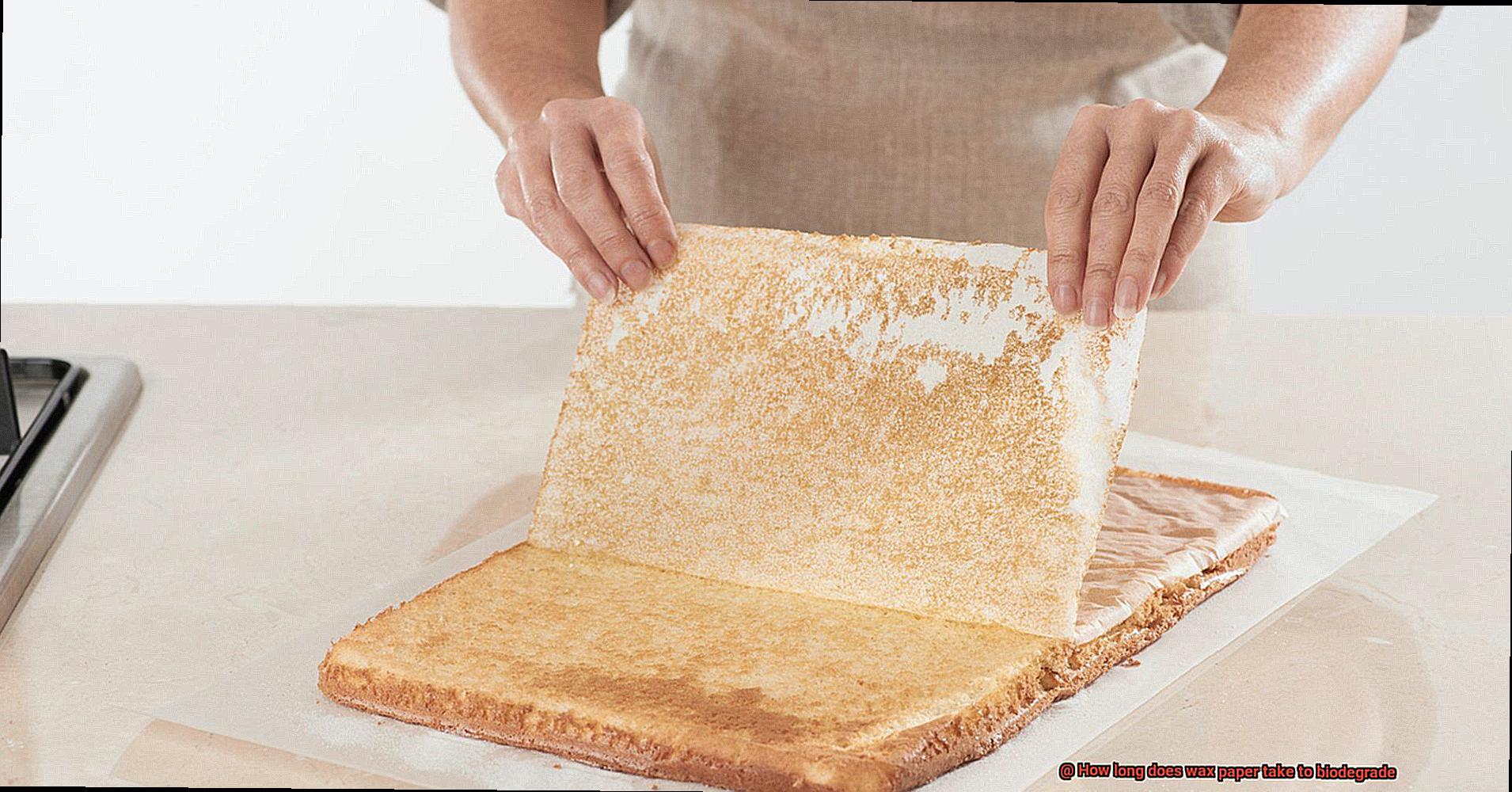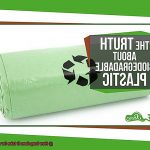Do you ever stop and think about the impact your food storage choices have on the environment? If so, you may be wondering how long it takes for wax paper to break down after use. Wax paper has been a go-to option for wrapping food items since the early 1900s, but its non-stick coating makes it less biodegradable than regular paper products.
The question of how long wax paper takes to biodegrade is not just important, but also surprising. While it will eventually decompose, it can take years depending on factors like temperature and moisture. In this blog post, we’ll dive deeper into this topic and explore what affects the speed and effectiveness of decomposition.
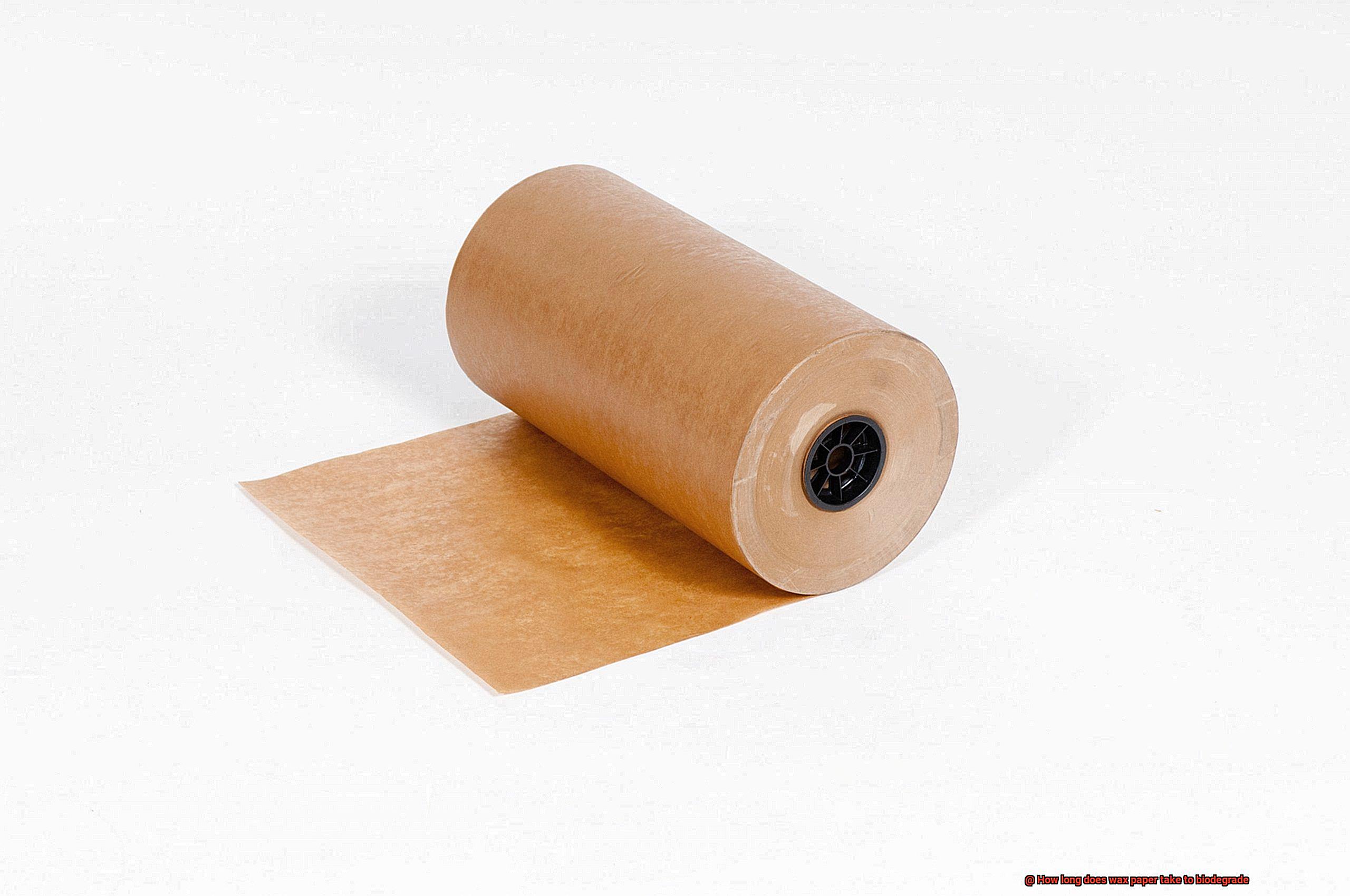
But that’s not all. We’ll also discuss the environmental impact of using wax paper and provide some eco-friendly alternatives that you can consider. So sit back, relax, and join us as we explore the world of wax paper biodegradability.
What is Biodegradation and How Does it Affect Wax Paper?
Contents
- 1 What is Biodegradation and How Does it Affect Wax Paper?
- 2 Is Wax Paper Biodegradable?
- 3 Factors That Impact How Long Wax Paper Takes to Biodegrade
- 4 Research Findings on How Long It Takes for Wax Paper to Biodegrade
- 5 Potential Issues with Disposing of Wax Paper Improperly
- 6 Alternatives to Wax Paper
- 7 Conclusion
Wax paper is a versatile household item that we use for wrapping food or as a non-stick surface for cooking. But have you ever wondered how long it takes for wax paper to break down after disposal?
Biodegradation is a vital process by which organic substances are broken down by living organisms into simpler compounds such as carbon dioxide, water, and minerals. This process helps recycle organic matter and reduce waste, making it essential for the environment. Although wax paper is made from natural materials such as paper and wax, the rate at which it biodegrades can vary depending on factors like temperature, humidity, and microorganisms’ presence.
Research shows that under optimal conditions, wax paper can take several weeks to months to biodegrade. However, if it ends up in a landfill buried under layers of other waste, it may take much longer to break down. Also, if wax paper is contaminated with food or other substances, it may not biodegrade as quickly because microorganisms may not break down the material effectively.
That said, it’s crucial to dispose of wax paper properly and consider alternative options like compostable or reusable food wraps. By making small changes in our daily habits, we can reduce our impact on the environment and work towards a more sustainable future. Furthermore, be aware of the type of wax used in your food packaging and follow safe handling and disposal practices to avoid potential health risks.
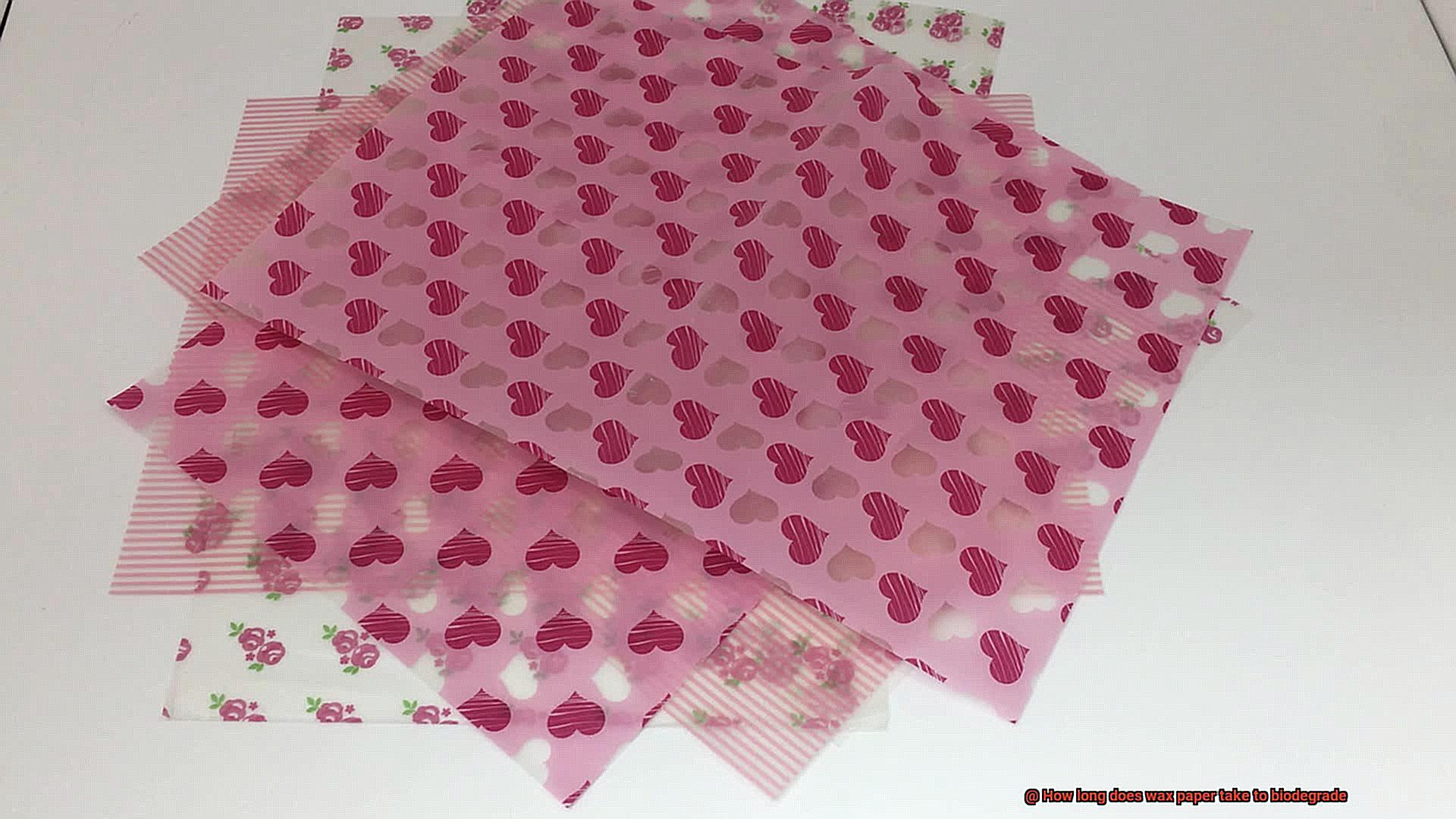
Is Wax Paper Biodegradable?
Although it will break down over time, it may take longer than other types of biodegradable materials due to the wax coating on the paper. However, when exposed to the elements, the paper will eventually start to break down and decompose.
The length of time it takes for wax paper to biodegrade depends on various factors such as temperature, moisture levels, and exposure to sunlight. It can take anywhere from several months to several years for wax paper to completely biodegrade. So, if you’re looking for a quick solution to dispose of your wax paper products, composting them might not be your best option.
It’s worth noting that not all types of wax paper are created equal in terms of biodegradability. Some types may contain additives or coatings that can slow down or prevent the biodegradation process altogether. Therefore, proper disposal of wax paper is crucial in reducing our impact on the environment and moving towards a sustainable future.
Although wax paper may not be the most environmentally friendly option out there, it is still a better alternative to non-biodegradable materials such as plastic. By making small changes in our daily habits like properly disposing of wax paper and choosing eco-friendly options whenever possible, we can make a positive impact on our planet.
Factors That Impact How Long Wax Paper Takes to Biodegrade
There are several factors that determine the biodegradability of wax paper, such as the thickness of the wax coating, disposal method, presence of other materials, and environmental conditions.
- The first factor affecting the biodegradability of wax paper is the thickness of the wax coating. Thicker coatings create a barrier that prevents natural decomposition, making it take longer to break down.
- The second factor is the environment in which wax paper is disposed of. In a landfill, it can take years to biodegrade due to the lack of oxygen and moisture necessary for decomposition. However, composting facilities or backyard compost piles can accelerate this process.
- The third factor is the presence of other materials that may impact biodegradation. If wax paper has a plastic coating, it will take much longer to biodegrade than if it were solely paper and wax.
- Lastly, environmental conditions play a crucial role in how long wax paper takes to biodegrade. Higher temperatures and increased moisture can hasten decomposition, while colder and drier conditions can slow it down.
By understanding these factors, we can make informed decisions about disposing of our wax paper products. Thinner coatings and proper disposal methods can speed up decomposition, while avoiding plastic coatings and keeping wax paper away from landfills can protect our environment.
Research Findings on How Long It Takes for Wax Paper to Biodegrade
Wax paper is a go-to material for packaging food items, but its impact on the environment can’t be ignored. When not disposed of properly, it can contribute to environmental pollution by adding to the waste in landfills. So, how long does it take for wax paper to biodegrade and what factors can affect this process?
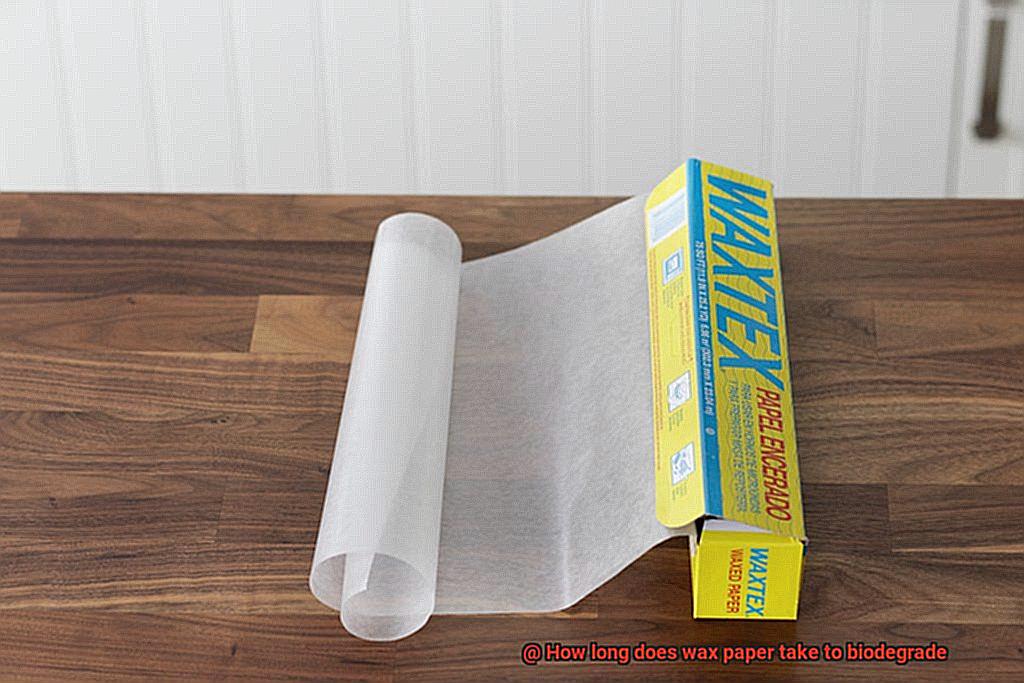
Studies show that in optimal conditions, wax paper takes approximately two to six months to biodegrade. That means if you compost your wax paper, it will break down relatively quickly and turn into organic matter that can be used as a fertilizer. However, the actual time it takes for wax paper to biodegrade can vary depending on various factors such as temperature, humidity, and exposure to sunlight.
While composting is one solution, recycling wax paper is another option. This process involves separating the wax coating from the paper fibers and then processing them separately. However, it requires specialized machinery that isn’t commonly available in all recycling facilities. Therefore, it’s crucial to check with your local recycling facility to see if they accept wax paper for recycling.
It’s worth noting that while wax paper may biodegrade relatively quickly, we still need to reduce our use of single-use items and switch to more sustainable alternatives such as reusable containers or beeswax wraps. By doing so, we can significantly reduce our impact on the environment and work towards a more sustainable future.
Potential Issues with Disposing of Wax Paper Improperly
Not only can it harm the environment, but it can also cause blockages in pipes and drains, and even pose a threat to wildlife.
The environment is particularly vulnerable to the harmful effects of improperly disposed of wax paper. When wax paper ends up in landfills, it can take years to break down and release harmful chemicals into the air and groundwater. This pollution can cause devastating effects on the environment and our health.
Another problem with wax paper is that it doesn’t break down as easily as regular paper, which leads to clogs in pipes and drains. If flushed down a toilet or washed down a sink, wax paper can accumulate and cause blockages that are costly and challenging to remove.
Additionally, when wax paper is littered or left outside, it puts animals at risk. They may mistake it for food and ingest it, leading to health problems or even death. As responsible citizens of this planet, we must remember that we share this earth with other creatures, and our actions have consequences for them too.
To avoid these potential issues, we need to dispose of wax paper correctly. We may think it’s just a small thing, but every step counts. Always put it in the appropriate waste receptacle, like a compost bin or a trash can based on whether or not it’s coated in food or grease. It’s also crucial to be mindful of how much wax paper we use and consider sustainable alternatives like reusable food storage containers.
Alternatives to Wax Paper
Luckily, there are many options available that are just as convenient and functional. Let’s dive into some of the best alternatives to wax paper.
First on the list is parchment paper. This handy kitchen essential is made from unbleached, non-toxic paper and coated with silicone for easy release. You can use it for baking, roasting, and even as a liner for frying pans. It’s a versatile option that is widely available and easy to use.
If you’re looking for a more durable option, reusable silicone mats are an excellent choice. Made from food-grade silicone, these mats can be used in place of wax paper for baking or roasting. They’re easy to clean and can be used over and over again, making them a more sustainable option than disposable wax paper.
For those who prefer a natural option, beeswax wraps are an excellent alternative. These wraps are made from cotton infused with beeswax and can be used in place of plastic wrap or wax paper for covering food. They’re reusable and biodegradable, making them an eco-friendly choice that will save you money in the long run.
Finally, if you’re looking for a completely biodegradable and compostable option, consider using banana leaves or corn husks to wrap your food. These materials are natural, renewable resources that will break down naturally over time.
aaQA5rRRIcQ” >
Conclusion
In conclusion, while wax paper has been a popular choice for food storage for over a century, we must be mindful of its impact on the environment. Despite being made from natural materials like paper and wax, the non-stick coating makes it less biodegradable than regular paper products.
The rate at which wax paper breaks down depends on various factors such as temperature, moisture levels, and exposure to sunlight. Under ideal conditions, it can take several weeks to months to biodegrade. However, if disposed of improperly or contaminated with food or other substances, it may take much longer to break down.
Proper disposal is crucial in reducing our impact on the environment. We should consider eco-friendly alternatives like compostable or reusable food wraps. By avoiding plastic coatings and keeping wax paper away from landfills, we can make small changes in our daily habits that will have a significant impact on the planet.
Thankfully, there are many alternatives available that are just as convenient and functional as wax paper. From parchment paper and reusable silicone mats to beeswax wraps and natural options like banana leaves or corn husks, there are plenty of choices that will help us reduce waste and protect the planet.
Remember that every step counts in creating a healthier world for ourselves and future generations.
